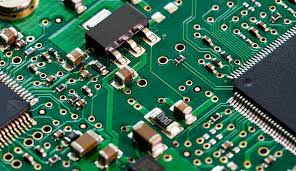Understanding Tenting
Tenting in PCB manufacturing refers to the technique of covering via holes with a protective mask to prevent solder, plating, or other contaminants from entering these openings during the manufacturing process. This method is critical for maintaining the integrity and functionality of a circuit board.
The Role and Importance of Tenting
Why is tenting important? Vias are small holes drilled into the PCB that allow electrical connection between different layers. Unprotected vias can lead to issues such as short circuits, oxidization, or contamination that compromise the PCB’s performance. By applying a solder mask over these vias, manufacturers can shield the internal circuitry from environmental hazards and mechanical damage, thus ensuring reliability and longevity of the product.
Different Methods of Tenting
There are primarily three methods used for tenting vias: dry film, liquid photoimageable solder mask (LPSM), and cap plugging.
Dry Film
Dry film is a photopolymer material that is applied over the vias before the solder mask process. It offers precise control over the coverage but can be more labor-intensive and costly, making it less popular for high-volume production.
Liquid Photoimageable Solder Mask (LPSM)
LPSM is the most common method used today due to its efficiency and cost-effectiveness. It involves applying a liquid solder mask that hardens under UV light, creating a robust barrier over the vias. This method is favored for its scalability and ability to handle complex designs.
Cap Plugging
In cap plugging, vias are filled with a conductive or non-conductive paste before the solder mask application. This technique is often used for high-density PCB designs where reliability is paramount, as it completely seals the via.
Benefits of Tenting
Enhanced Reliability and Performance One of the key benefits of tenting is the enhanced reliability it brings to PCBs. By preventing contaminants and reducing the risk of electrical shorts, tented vias help maintain the overall performance of the board under various conditions.
Improved Aesthetic and Functional Integrity Tenting also contributes to the aesthetic quality of a PCB by creating a smoother and cleaner surface. This can be particularly important in consumer electronics, where the appearance of the components can influence consumer perception.
Cost Efficiency Despite the initial costs associated with some tenting techniques, the long-term savings are significant. By protecting vias from potential damage and failure, manufacturers reduce the need for repairs or replacements, thus minimizing the total cost of ownership.
Applications and Real-World Usage
Tenting is widely used across different industries including automotive, consumer electronics, and aerospace. For example, in the automotive sector, where electronics must withstand harsh environments, tenting is essential for ensuring the durability and safety of the components.
In conclusion, tenting is a vital process in PCB manufacturing that plays a crucial role in enhancing the durability, reliability, and performance of the final product. Its importance cannot be overstated, and it remains a fundamental practice in the electronics manufacturing industry. For more detailed insights into tenting and its significance in PCB fabrication, you can explore tenting.
